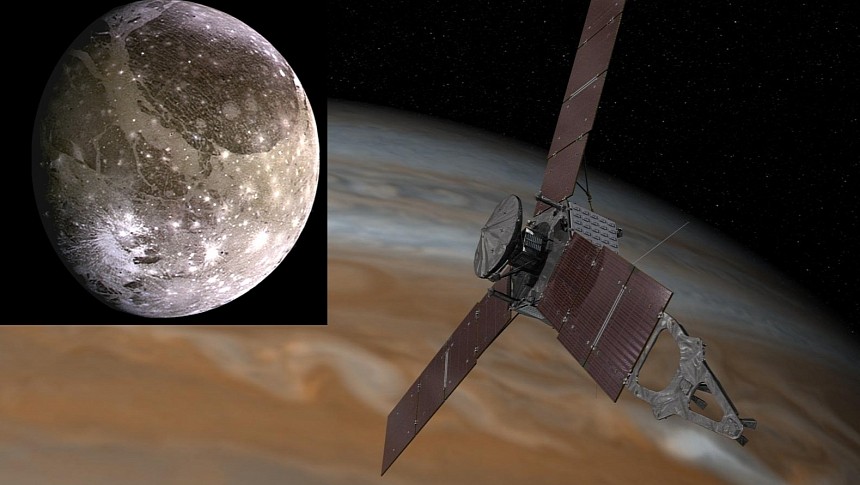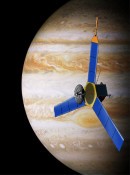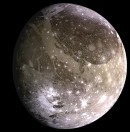As the Solar System-wide quest to find the building blocks of life carries on, humanity's isolated a few places most likely to show us the clues we're looking for. More often than not, the public's attention is hyper-fixated on Mars. A planet that, we remind you, has an atmosphere thin like a sheet of paper and soil that'll poison you if exposed to it for too long. But thanks to NASA's Juno probe, Jupiter's moons might one day be more tantalizing to scientists than even Mars is right now.
In regards to Ganymede, the Solar System's largest natural satellite, proceedings just got a heck of a lot more exciting. It's all thanks to a discovery that puts the massive moon a few notches higher in priority in the frantic search for life. As the Juno probe, in orbit around Jupiter since 2016, made its rounds around Jupiter, its suite of sensors and cameras focused on Ganymede noticed something peculiar. As NASA scientists combed through the data from Juno's Jovian InfraRed Auroral Mapper (JIRAM), their hypothesis based on the findings could send shockwaves through the scientific community.
The discovery that made NASA do a double take was the apparent presence of mineral salts like ammonium chloride, sodium bicarbonate, and hydrated sodium chloride on Ganymede's surface. At least on Earth, these salts almost always indicate the presence of liquid water nearby, either past or present. As if to sweeten the scientific pot even more, Juno's sensors also detected what appeared to be organic compounds mixed in with the salts scattered across Ganymede's surface. Based on these findings, NASA's hypothesis of Ganymede previously hosting liquid seas on its surface or possibly even a sub-surface ocean in the present day has more credence than ever.
"We found the greatest abundance of salts and organics in the dark and bright terrains at latitudes protected by the magnetic field," said Scott Bolton, Juno’s principal investigator from the Southwest Research Institute in San Antonio, as he talked over the finer details of Juno's latest discovery. "This suggests we are seeing the remnants of a deep ocean brine that reached the surface of this frozen world."
Previous observations of Ganymede by the Galileo space probe up close, and the Hubble Space Telescope from low-Earth orbit have insinuated that Ganymede was hiding something more than an Earth's Moon-like surface environment. But with Juno's unparalleled infrared spectroscopy abilities compared to previous Jovian system missions, the veteran space probe all but confirms Ganymede's legitimacy in the quest to find organic life in deep space.
With human-crewed space missions beyond Earth's orbit soon to be in the realm of capability, it makes you wonder whether we as a species should be so hyper-fixated on one specific heavenly body when so many candidates are lurking just within mankind's reach.
The discovery that made NASA do a double take was the apparent presence of mineral salts like ammonium chloride, sodium bicarbonate, and hydrated sodium chloride on Ganymede's surface. At least on Earth, these salts almost always indicate the presence of liquid water nearby, either past or present. As if to sweeten the scientific pot even more, Juno's sensors also detected what appeared to be organic compounds mixed in with the salts scattered across Ganymede's surface. Based on these findings, NASA's hypothesis of Ganymede previously hosting liquid seas on its surface or possibly even a sub-surface ocean in the present day has more credence than ever.
"We found the greatest abundance of salts and organics in the dark and bright terrains at latitudes protected by the magnetic field," said Scott Bolton, Juno’s principal investigator from the Southwest Research Institute in San Antonio, as he talked over the finer details of Juno's latest discovery. "This suggests we are seeing the remnants of a deep ocean brine that reached the surface of this frozen world."
Previous observations of Ganymede by the Galileo space probe up close, and the Hubble Space Telescope from low-Earth orbit have insinuated that Ganymede was hiding something more than an Earth's Moon-like surface environment. But with Juno's unparalleled infrared spectroscopy abilities compared to previous Jovian system missions, the veteran space probe all but confirms Ganymede's legitimacy in the quest to find organic life in deep space.
With human-crewed space missions beyond Earth's orbit soon to be in the realm of capability, it makes you wonder whether we as a species should be so hyper-fixated on one specific heavenly body when so many candidates are lurking just within mankind's reach.






